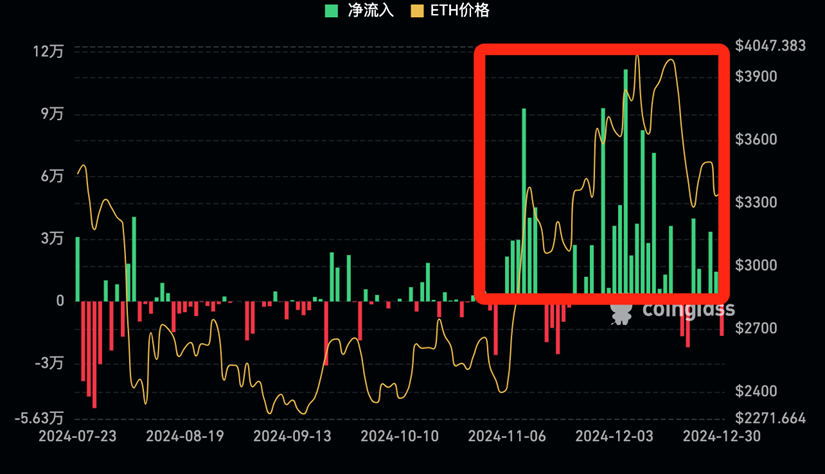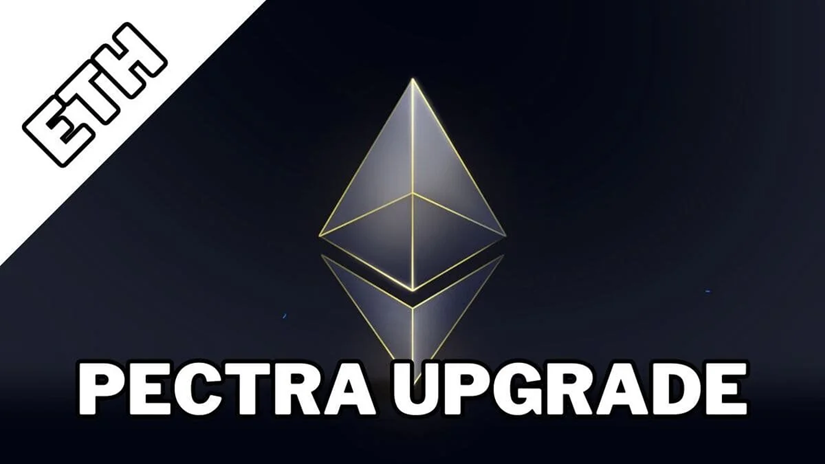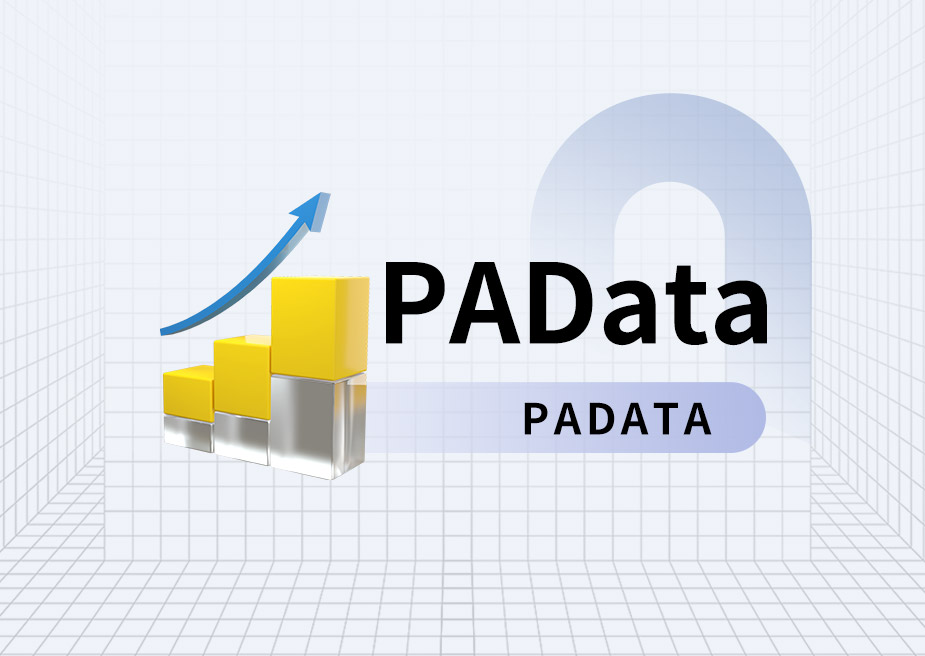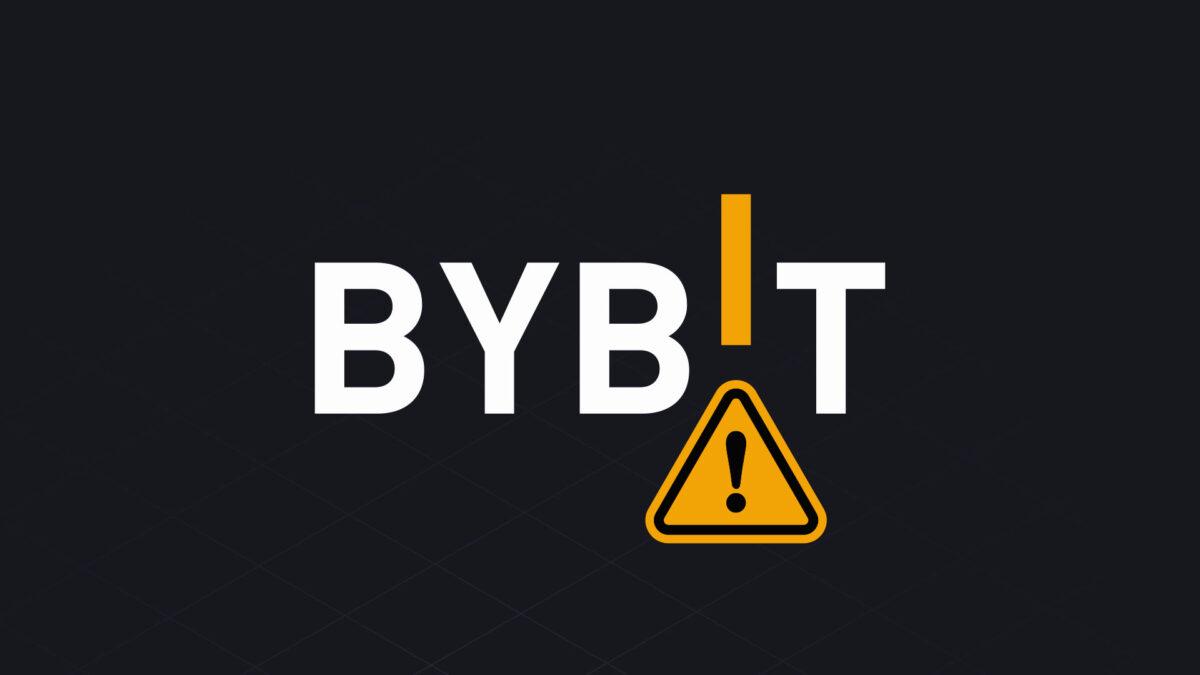In the cryptocurrency market in recent months, driven by the "Trump effect", Bitcoin has performed particularly well. At the same time, other public chain projects such as SOL and SUI have also recorded significant gains, setting new historical highs. In contrast, the overall performance of the Ethereum ecosystem is relatively flat.
Although ETH once climbed to around $4,000, it has not yet reached its previous historical high of $4,800, and other tokens in the Ethereum ecosystem have also performed mediocrely. However, this does not mean that the decline of Ethereum is inevitable.
It is worth noting that while Bitcoin has recently experienced a correction, the price of ETH has shown relative stability, mainly due to the continued purchase of ETH by institutional investors. As the price of Bitcoin continues to hit new highs, some institutional investors have begun to turn their attention to Ethereum.

We can take a look at the inflows and outflows of funds in the spot Ethereum ETF over the past month.
From the above screenshots, we can see that since Trump’s election in November, the spot Ethereum ETF has shown a trend of net inflows on most trading days, which is in sharp contrast to the continuous net outflows when the ETF was first launched. This phenomenon clearly shows that more and more institutions are indirectly increasing their risk exposure to ETH through the spot Ethereum ETF.
Given Trump's friendly stance towards the cryptocurrency market and his possible loose cryptocurrency policies, market expectations have changed positively. For example, although the spot Ethereum ETF has been approved, the ETH in it is not yet supported as collateral, which to some extent limits the potential returns of holding ETH. However, with Trump's coming to power, the market generally expects that the pledged Ethereum ETF is expected to be approved, which will provide investors with a new channel for income and further stimulate the market's interest and confidence in Ethereum.
In addition, there is another important positive factor supporting the subsequent ETH price, which is the Ethereum Pectra upgrade.

The Ethereum Pectra upgrade is expected to begin in the first quarter of 2025. This upgrade combines two separate upgrades: Prague and Electra, which affect the execution layer and consensus layer of the network respectively. The Pectra upgrade will include many improvements, such as supporting users to pay gas fees with other tokens , speeding up the execution of smart contracts, and increasing staking rewards for validators.
Although Ethereum has undergone several upgrades, such as the merge upgrade in 2022 and the Cancun upgrade in 2024, it still faces many challenges.
Compared with public chains such as SOL, SUI and BNB, Ethereum has no advantage in terms of TPS or transaction gas fees. When the Ethereum network is busy, gas fees soar. Therefore, more and more projects are choosing to build on other public chains, which has led to a significant drop in Ethereum ecosystem transaction volume. This Pectra upgrade is a solution proposed to solve these pain points.
The Ethereum Pectra upgrade aims to comprehensively improve the speed, scalability and convenience of Ethereum, providing a better user experience for ordinary users and blockchain developers.
What are the main improvements in the Pectra upgrade?
1. Account abstraction
Currently, when we conduct transactions in the Ethereum ecosystem, we need to hold a certain amount of ETH in the account as gas fees. If there is not enough ETH in the account to pay for gas, the transaction will not be successful, which will undoubtedly affect the normal progress of some transactions.
However, after the Pectra upgrade is completed, Ethereum will introduce the concept of account abstraction, which will significantly improve the user's trading experience. Through account abstraction, users can not only pay gas fees through ETH, but also through other tokens such as USDC and DAI to pay gas fees, which will make the operation more flexible. In addition, after the Pectra upgrade is completed, third-party DApps will be able to pay gas fees for users, which means that in some cases, users do not need to pay gas fees.
2. Smart Contract Efficiency
With the gradual adoption and implementation of Ethereum improvement proposals (such as EIP-7692), the efficiency of the Ethereum Virtual Machine (EVM) will be significantly improved, thereby greatly accelerating the execution of smart contracts. This optimization measure not only greatly reduces the deployment cost of smart contracts, but also simplifies their complexity, bringing substantial benefits to both developers and users.
3. Optimization for validators
As we all know, as a validator of the Ethereum public chain, you need to stake at least 32 ETH, and in return, the validator will receive corresponding rewards. However, the part exceeding 32 ETH does not generate any income and is idle, which undoubtedly affects the efficiency of fund utilization.
In the Pectra upgrade, a more flexible staking and withdrawal mechanism (EIP-7002) was introduced, and the validator's staking limit was increased from 32ETH to 2048ETH (EIP-7251), which will greatly enhance the flexibility and operating efficiency of the system, especially for individuals and companies that hold and manage large amounts of ETH.
Secondly, the Pectra upgrade will also introduce the "validator integration" function, allowing large operators such as Lido that provide ETH staking services to many users to reduce the number of their validator nodes. This move can not only effectively reduce the operational burden of the Ethereum network, but also further increase the network speed while reducing unnecessary consumption of resources.
4. Optimize data management through Verkle trees
The Pectra upgrade introduces a crucial technical innovation, the Verkle tree, which enables nodes to store blockchain data more efficiently. Although it sounds complicated, the Verkle tree actually greatly improves the speed and scalability of the Ethereum network by optimizing the data storage and verification mechanism.
In short, the Verkle tree represents an advanced way of organizing data. It not only significantly reduces storage requirements, but also speeds up transaction processing, bringing users a smoother and more economical Ethereum experience.
5. Layer 2 Solutions and PeerDAS
Ethereum Layer 2 solutions such as Arbitrum and Optimism aim to move a large number of transactions outside the mainnet for processing, thereby alleviating network congestion and reducing transaction costs (gas fees).
The Pectra upgrade will introduce the Peer Data Availability Sampling (PeerDAS) function to further optimize the L2 solution. PeerDAS technology can assist the Layer2 network to process data more easily, thereby reducing usage costs and increasing processing speeds. This is a great benefit for both DApps and users in the Ethereum ecosystem.
In short, the Pectra upgrade is the next major upgrade of the Ethereum ecosystem, which will lay a solid foundation for the long-term development of the Ethereum ecosystem. Whether it is ordinary users, validators, or developers, the Pectra upgrade will bring some new features to improve the user experience of Ethereum.





